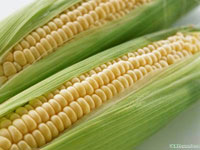21st International Symposium on Chirality
http://www.chirality2009.org/index.html
Educational Training / Short Courses
Sunday, July 12, 2009
Four half-day short courses will be presented on Sunday, July 12, the Sunday preceding the Chirality Medal Award talk and reception.
Time |
Sunday Educational Training /
Short Courses |
|
8:30 am - 12 noon |
Course 1: Chiroptical Spectroscopy of Pharmaceuticals and
Biomolecules
Instructors: Prof. Prasad Polavarapu and Prof. Nina Berova |
|
8:30 am - 12 noon |
Course 2: Introduction to Chiral Separations
Instructor: Prof. Daniel Armstrong |
|
1:00 pm - 4:30 pm |
Course 3: Supermolecular Stereochemistry in Liquid Crystals
Instructor: Prof. David Walba |
|
1:00 pm - 4:30 pm |
Course 4: Preparative Chiral Separations
Instructor: Dr. Christopher Welch |
Course Descriptions:
Course 1: Chiroptical Spectroscopy of Pharmaceuticals and Biomolecules
Instructors: Prof. Prasad Polavarapu, Vanderbilt University and Prof. Nina Berova, Columbia University
Chiral molecules have become invaluable components for drug development and in understanding drug-DNA interactions. To understand these interactions, it is necessary to know the absolute configuration and predominant conformation that a chiral molecule has in its interaction with DNA. To facilitate the structural analysis, pharmaceutical companies have invested, in recent years, a large amount of resources in establishing a facility often termed as “Chiral Tool Box”. This “Tool Box” contains chiroptical spectroscopic equipment and concomitant computational methods for analyzing the chiroptical spectra. Biochemists and synthetic chemists have in the past depended on X-ray crystal structural analysis for determining the absolute configurations of proteins and chiral organic/inorganic molecules synthesized in their labs. However, not all proteins or chiral organic/inorganic molecules can be crystallized, so these chemists are forced to find laborious alternate methods. Chiroptical spectroscopic methods provide a convenient solution to these problems. As chiroptical spectroscopic methods are used for investigating the substances in solution phase, the need for crystallization is completely avoided. As a result, Chiroptical spectroscopy represents the latest trend that is being used increasingly by pharmaceutical companies, biochemists and synthetic chemists. This short course provides the necessary background and practical details for using chiroptical spectroscopic methods. Four chiroptical methods that will be discussed in this short course are: Vibrational circular dichroism (VCD), Vibrational Raman optical activity (VROA), Electronic circular dichroism (ECD/FDCD) and Optical rotatory dispersion (ORD). For each of these methods the experimental methods for measurements will be discussed first. Then the computational methods for analyzing the experimental data will be introduced. Emphasis will be placed on literature examples from pharmaceutical and biological chemistry illustrating the applications of these methods on molecular and supramolecular levels. The advantages (sometimes necessity) of using simultaneously more than one chiroptical method will also be pointed out.
Course 2: Introduction to Chiral Separations
Instructor: Prof. Daniel Armstrong, University of Texas at Arlington
This introductory short course is designed for researchers faced with separation or analysis of enantiomeric compounds. The goal of the course is to familiarize the participants with the best available options when confronted with the need for chiral separations. The first part of the material to be covered will include a review of the terminology of chirality and a brief overview of the theory behind enantiomeric separations. In addition, new products and techniques will be discussed. Participants should have a basic knowledge of organic chemistry and chromatography and have previous experience with routine HPLC (reverse phase and normal phase).
Course 3: Supermolecular Stereochemistry in Liquid Crystals
Instructor: Prof. David Walba, University of Colorado, Boulder
Stereochemistry in soft materials (liquid crystals, polymers, and gels) is extremely rich, and maintains are aura of complexity due, in part, to the highly “flexible” nature of their structure. With regard to issues of chirality, thermotropic liquid crystals (LCs), which are typically global free energy minima occurring in a large ensemble of small organic molecules, have until recently been quite simple. LCs formed from achiral molecules or racemic mixtures are achiral, while all LCs formed from enantiomerically enriched compounds must be chiral. The latter fact of symmetry (i.e. an ensemble, or phase, of unichiral molecules cannot possess reflection symmetry) led to the theoretical proposal, then experimental realization, of LC phases with polar symmetry driven by chirality combined with layering and tilt. This, in turn, provides measurable and useful, macroscopic electric dipoles in the absence of applied fields. The situation became even more interesting in the late 1990s with the discovery of spontaneous reflection symmetry breaking (and nonpolar symmetry breaking) in LCs – a complex but satisfying story. In this short course, stereochemistry in highly “flexible” systems will be introduced in the context of molecular topological stereoisomerism, (e.g. molecular Mobius strips, knots and links). The basics of LC phase structure, and current thinking about the key free energy terms driving these structures, will then be discussed, followed by a description of the phenomenology and applications of electrically polar LCs, including prospects for utilization of polarity in LCs for high throughput measurement of enantiomeric excess. Finally, the rich stereoisomerism occurring in bent-core, or banana phase materials, including spontaneous reflection symmetry breaking will be discussed. The soft materials community is still divided with regard to the physical reasons for this novel conglomerate formation in fluid phases; models will be explored.
Course 4: Preparative Chiral Separations
Instructor: Dr. Christopher Welch, Merck & Co., Inc.
This course will present an introduction to modern preparative chiral chromatography. A general introduction to tools and techniques will provide practical background on how to approach small, intermediate, and large scale preparative chromatographic resolutions. Several practical case studies from the pharmaceutical industry will be presented, and general strategies for approaching chromatographic resolutions will be discussed. Attendees are encouraged to bring problems or situations for classroom discussion.
Free Vendor Seminars
Vendor seminars will be held Monday and Tuesday during the breakfast and lunch time slots. The vendor seminars provide opportunities to get acquainted with the latest developments in equipment, media, and services available on the market. Exhibitors may request to present a vendor seminar by completing and returning the Vendor Seminar Agreement. Questions should be directed to the Chirality 2009 Symposium / Exhibit Manager, Ms. Janet Cunningham, at janetbarr@aol.com.
Monday Free Vendor Seminar
12:30–1:30 pm Sponsored by Phenomenex
“A Welcome Change to the Chiral Industry. How Phenomenex corporate capabilities in chiral solutions can impact your work.” (20 mins) “Reversed-Phase vs. Normal Phase: Which Should Be the Primary Separation Mode Screened in Chiral Method Development?” (25 mins)
Tuesday Free Vendor Seminars
7:15–8:15 am Sponsored by TharSFC
“SFC: New Developments in Isomeric Separation and Purifications”
12:30–1:30 pm Sponsored by Supelco/Sigma-Aldrich
"Strategies for Chiral HPLC Method Development”
12:30–1:30 pm Sponsored by Chiral Technologies
"Comprehensive Solutions for Enantioselective Chromatography"
 引用
刪除
thereyoube / 2009-06-08 18:40:27
引用
刪除
thereyoube / 2009-06-08 18:40:27









